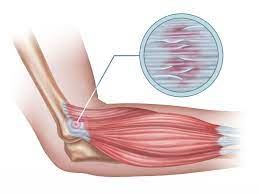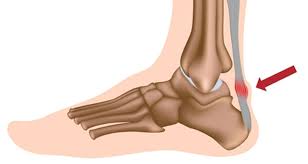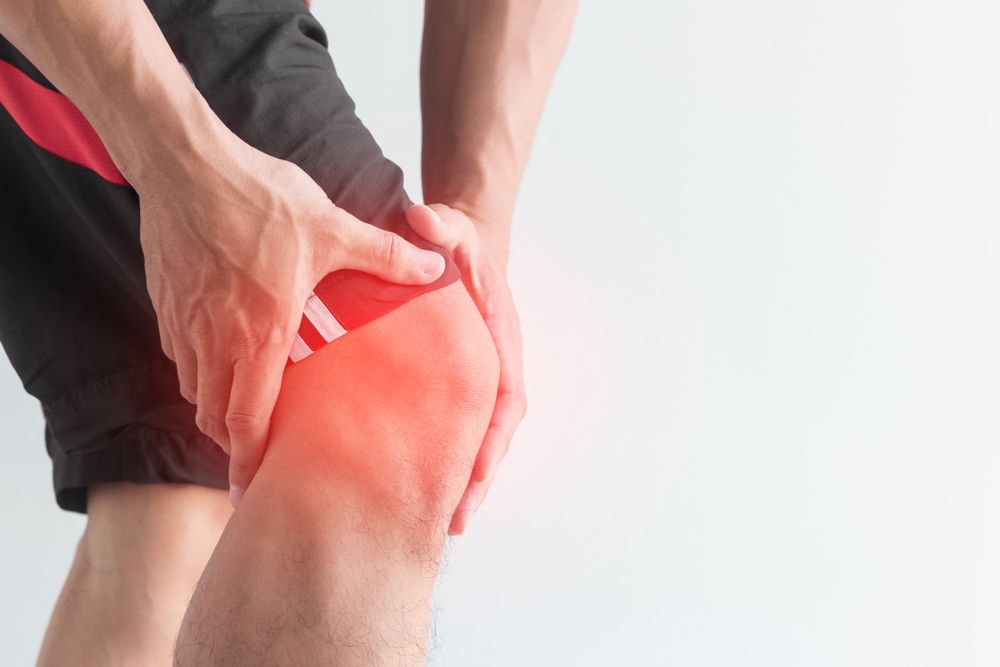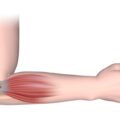What is Patellar Tendonitis?
Patellar tendinitis is an injury to the tendon connecting your kneecap (patella) to your shinbone. The patellar tendon works with the muscles at the front of your thigh to extend your knee so that you can kick, run and jump.
Patellar tendinitis, also known as jumper’s knee, is most common in athletes whose sports involve frequent jumping — such as basketball and volleyball. However, even people who don’t participate in jumping sports can get patellar tendinitis.
Root Cause of Disease
Patellar tendinitis is a common overuse injury, caused by repeated stress on your patellar tendon. The stress results in tiny tears in the tendon, which your body attempts to repair.
But as the tears in the tendon multiply, they cause pain from inflammation and weakening of the tendon. When this tendon damage persists for more than a few weeks, it’s called tendinopathy.
Symptoms
Pain is the first symptom of patellar tendinitis, usually between your kneecap and where the tendon attaches to your shinbone (tibia).
Initially, you may only feel pain in your knee as you begin physical activity or just after an intense workout. Over time, the pain worsens and starts to interfere with playing your sport. Eventually, the pain interferes with daily movements such as climbing stairs or rising from a chair.
You may also have some swelling and a burning feeling in the kneecap. Kneeling down or getting up from a squat can be especially painful.
Causes
- Physical activity: Running and jumping are most commonly associated with patellar tendinitis. Sudden increases in how hard or how often you engage in the activity also add stress to the tendon, as can changing your running shoes.
- Tight leg muscles: Tight thigh muscles (quadriceps) and hamstrings, which run up the back of your thighs, can increase strain on your patellar tendon.
- Muscular imbalance: If some muscles in your legs are much stronger than others, the stronger muscles could pull harder on your patellar tendon. This uneven pull could cause tendinitis.
- Chronic illness: Some illnesses disrupt blood flow to the knee, which weakens the tendon. Examples include kidney failure, autoimmune diseases such as lupus or rheumatoid arthritis and metabolic diseases such as diabetes.
Home Remedies to treat Patellar Tendinitis
Remedy – 1: Icing & Heating


Procedure:
To help reduce swelling, apply an ice pack, or wrapped in a towel, for at least half an hour, 3 to 4 times a day. Never place an ice pack or bag directly on the skin as this can cause damage, or in severe cases frostbite, to skin tissue, and if left on your skin too long can stop blood flow.
Inflammation is the body’s natural way of healing itself. Once an injury occurs, your body increases blood flow and within this flow are organic nutrients such as, amino acids and antibodies, which protect and heal the inflamed area. Applying a warm compress, like a heating pad or heating pods, helps to increase the blood flow and speed up the healing process. This not only feels good on the injury, but it helps relax tight muscles and relieves pain.
Remedy – 2: Apple Cider Vinegar
Materials: Apple cider Vinegar

Procedure:
- Mix half a cup of apple cider vinegar with half a cup of warm water.
- Soak a clean washcloth in this mixture, wring it and place on the affected area surrounding the tendon. Leave it on for 20 to 30 minutes
- Remove the washcloth.
- You can also mix a tablespoon of apple cider vinegar in a glass of water and drink daily.
Product link: Apple Cider Vinegar
Remedy – 3: Cayenne Pepper
Materials:
- 1 teaspoon of powdered cayenne pepper
- 2-3 teaspoons of olive oil

Procedure:
- To a teaspoon of cayenne pepper powder, add a few teaspoons of warmed olive oil.
- Massage this mixture gently onto the affected area.
- Leave it on for at least 30 minutes before washing it off.
- You can also mix a teaspoon of cayenne pepper in a glass of water and honey and drink daily.
You can apply cayenne pepper topically 2 to 3 times daily.
Product Link: Cayenne Pepper
Preventions
To reduce your risk of developing patellar tendinitis, take these steps:
- Don’t play through pain: As soon as you notice exercise-related knee pain, ice the area and rest. Until your knee is pain-free, avoid activities that put stress on your patellar tendon.
- Strengthen your muscles: Strong thigh muscles are better able to handle the stresses that can cause patellar tendinitis. Eccentric exercises, which involve lowering your leg very slowly after extending your knee, are particularly helpful.
- Improve your technique: To be sure you’re using your body correctly, consider taking lessons or getting professional instructions when starting a new sport or using exercise equipment.
- By exercising at a slower pace: If you notice pain during a particular exercise, stop and rest.
- Choose your shoes carefully: The shoes you wear while exercising should provide adequate cushioning for your heel and should have a firm arch support to help reduce the tension in the Achilles tendon. Replace your worn-out shoes. If your shoes are in good condition but don’t support your feet, try arch supports in both shoes.
- Stretch daily: Take the time to stretch your calf muscles and Achilles tendon in the morning, before exercise and after exercise to maintain flexibility. This is especially important to avoid a recurrence of Achilles tendinitis.
- Strengthen your calf muscles: Strong calf muscles enable the calf and Achilles tendon to better handle the stresses they encounter with activity and exercise.
- Cross-train: Alternate high-impact activities, such as running and jumping, with low-impact activities, such as cycling and swimming.




